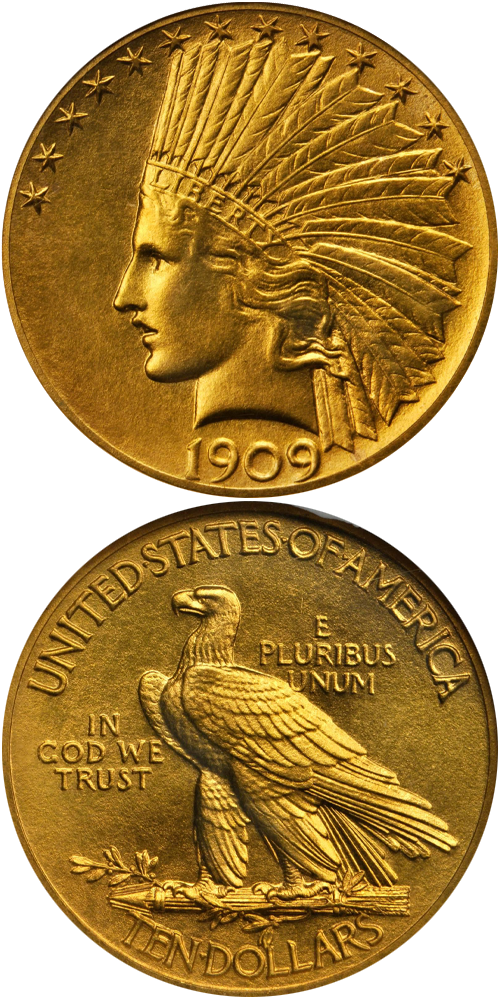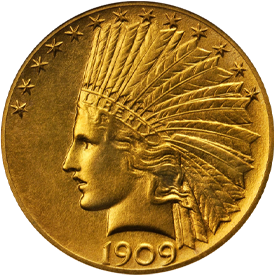Designed by: Augustus Saint-Gaudens
Issue Dates: 1908-1915
Composition: 90% gold, 10% copper
Diameter: 27 mm
Weight: 16.72 grams (258.02 grains)
Edge: 46 stars 1908-1911; 48 stars 1912-1933
Proof Mintage: 768
In 1908, with the introduction of Bela Lyon Pratt’s Indian head designs on the quarter and half eagle and shortly after St. Gaudens’ designs for the eagle and double eagle, the mint initiated a new finish on its issues of Proof gold coins. Described as a “matte” or “sandblast” finish, it was radically different than the earlier mirrored-surface Proofs, displaying no “luster” in the traditional sense of the word. Contemporary collector reaction to the matte Proofs was lukewarm at best, with many disappointed in the rather dull finish. It was not until the 1960s and 1970s that numismatists began to appreciate the subtle beauty of these coins, and values since that time have steadily advanced.
Proof eagles were made from 1908 through 1915 and during this period the Philadelphia mint experimented with several different finishes on these coins. Mintages were tiny, ranging from only 50 pieces in 1914 to 204 in 1910, but even these figures are somewhat misleading as it is believed not all were sold, and some returned to the melting pot at year’s end. Survival estimates today range from 35 to 75 pieces of each date. Following the fully matte, sandblasted look of the 1908 issue, the Mint tried a satin, or “Roman Finish” for the 1909 and 1910 issues. While these were not mirrored as the pre-1908 coins, they did display some luster and far more closely resembled the circulation or business strikes. These too proved less than popular. From 1911 through the end of Proof production in 1915, the Mint again returned to the “sandblast” technique, and production remained low, averaging only about 75 coins per year. Some variation is observed in the coloring, which ranges from a light honey mustard to a deep, rich brownish shade.
The most commonly-encountered certified examples today range from PR-63 to PR-67. PR-68s from NGC can occasionally be found but PCGS has so far (as of early 2024) certified only one. Due to their rarity, and appeal to collectors today, these are expensive coins in nearly all grades. Choice PR-63 and 64 pieces generally trade in the mid-five figure range, while Gem PR-65 and 66 pieces usually bring upper-five figure money. Truly superb pieces PR-67 and up are quite scarce and often realize prices into six-figures. Understand though that auction appearances for any date are few and far between, and the offering of any Proof Indian eagle occurs only about a half dozen times per year on average.







